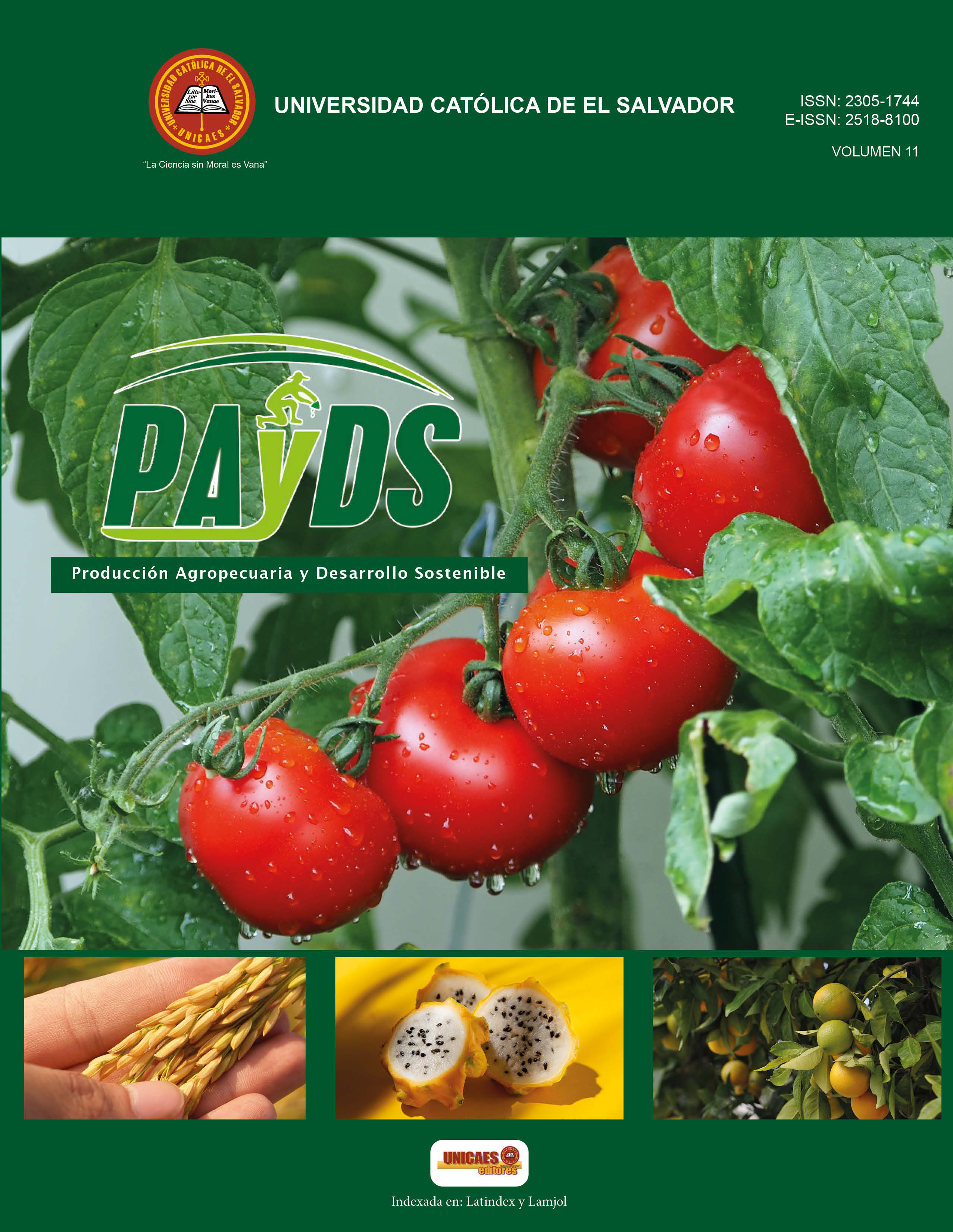Rendimiento y contenido nutricional de avena sola y asociada con vicia, por época de corte y por evento fenológico en la zona altoandina del Perú
DOI:
https://doi.org/10.5377/payds.v11i1.15210Palabras clave:
Avena, avena-vicia, energía, valor nutricional y viciaResumen
El objetivo del estudio fue determinar el rendimiento de materia seca y valor nutricional de avena y avena asociada con vicia en la época de corte de cosecha (hoja bandera, 100% de floración y grano leche). Se empleó un diseño experimental de parcelas divididas de 3x2 con cuatro repeticiones.
El rendimiento de materia seca fue superior en la época de corte grano leche en avena de 19.1tn/ha; y el menor fue en avena asociada con vicia en hoja bandera de 10.5tn/ha. En cuanto al contenido de proteína, resultó superior la avena-vicia en la época de corte hoja bandera (10.9%); pero en avena durante el evento fenológico grano leche fue menor (4.7%).
El contenido de energía digestible, energía neta de mantenimiento y energía neta de ganancia fueron superiores en avena durante la época de corte grano leche, con valores de 2.71, 1.41 y 0.76 Mcal/Kg, respectivamente; mientras la menor producción fue en avena asociada con vicia en hoja bandera (2.48, 1.22 y 0.52 Mcal/Kg).
En conclusión, el mayor rendimiento de materia seca se realizó durante la época de corte grano leche en avena. Mientras que el valor nutricional de avena, con respecto a la avena asociada con vicia, fue similar estadísticamente.
Descargas
393
Descargas
Publicado
Cómo citar
Número
Sección
Licencia

Esta obra está bajo una licencia internacional Creative Commons Atribución-NoComercial 4.0.
© Producción Agropecuaria y Desarrollo Sostenible
El copyright de los artículos se transfiere a la revista Producción Agropecuaria y Desarrollo Sostenible.
Como usuario de esta revista, usted posee:
● Acceso abierto para consultar la información contenida en este número
● Permiso para copiar, distribuir, mostrar, realizar o combinar las prácticas anteriores, en cuanto al uso de la información, siempre y cuando esta sea estrictamente sin fines de lucro.
Este revista utiliza una licencia CC BY-NC

Este obra está bajo una licencia de Creative Commons Reconocimiento-NoComercial 4.0 Internacional




